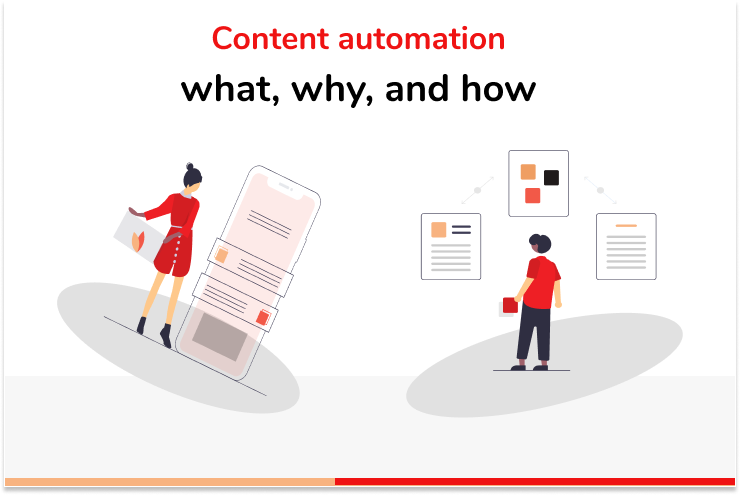Why content automation is a marketer’s best friend

Creating unique, relevant, and engaging content helps you develop a relationship with both potential and existing customers. Irrespective of the size and type of business, content plays an important role in educating customers, helping them make informed decisions, and ultimately, strengthening the loyalty they have for the brand. However, regularly bringing out content and managing a burgeoning asset database can be taxing, both in terms of effort and money involved. This is where content automation can help you stay ahead of the game. Content automation includes a series of processes and systems that remove the requirement for human intervention in content creation and distribution. The primary objective of content automation is to take over tasks that are time-consuming or repetitive. At its core, content automation is a seamless extension of natural language processing and semantic analysis. By doing this, it is easier to streamline individual content pieces in an automated and synchronized way.
What to automate?
Content automation can include automation of tasks such as:
- Plagiarism evaluation
- Scheduling of social media posts
- Identification of interesting topics to write about
- Proofreading
- Incorporating real-time SEO recommendations in content
- Tracking behavioral patterns and preferences of the target audience
- Personalization of content
- Content optimization for search engines
- Content sharing across different platforms
- Collection of the published content
- Sending automated emails to leads or customers
- Management of gated content
- Curating content from other sources to share on social media platforms
- Managing information about subscribers and followers
- Creation of a content creation and publishing schedule with reminders and notifications
- Updating existing content to make it stay fresh, relevant, and useful
- Computation of historical data points and their distillation into content suggestions
- Classification of assets by demographics, persona, type, and funnel stage
- Transcribing video and audio files
- Automatically archiving ageing or expiring content
- Preventing outdated or irrelevant content from getting cluttered on asset repositories
What are the benefits?
Saves time: A number of processes, tasks, and efforts are required to be assigned, delegated, and followed up on, to deliver a piece of content. Automating the content life cycle reduces the odds of human error and saves time and effort spent on repeated reminders.
Reduces cost: Automation is perceived by entrepreneurs as a form of strategic investment because it minimizes paperwork expenses and the need for extensive labor. Content automation reduces turnaround time and results in faster and synchronized processing of voluminous, time-consuming, and mundane tasks.
Reduces duplicity of efforts: It allows sharing of content across multiple platforms without duplication of efforts.
Increases creativity of team members: The time saved from automating repetitive tasks can help content creators focus their efforts in transforming customer-centric ideas into engaging content.
Improves accuracy and impact of marketing content: Content automation helps identify gaps, redundancies, and similarities in content. It can recognize patterns, analyze usage, and intelligently identify and recommend strategies to be followed while creating pieces with a longer shelf life.
Reaches a large audience with minimum effort: Facilitates increased coverage for content that is optimized for search engines. Promotional emails and newsletters can be utilized to reach a larger audience without effort duplication and with minimal human intervention.
Helps adhere to schedules: Content automation helps content creators and marketeers adhere to schedules that, in turn, help in maintaining optimal frequency and regularity of customer communication. In short, it improves the bottom line and it takes less revenue and resources to produce a positive return on investment.
In today’s tech-savvy world, with decreasing customer attention spans and an increasing need to scale up initiatives, content automation creates a win-win situation for both the brand and the customer. However, it is important to always remember that content automation should never be a set-and-forget process. Marketing strategies can only be optimized by following a continuously evolving and dynamic content automation strategy.
Relevant articles:
1.https://www.webfx.com/content-marketing/10-tips-for-better-content-marketing.html
2. https://scatter.co.in/save-time-while-creating-quality-content/
Contributors: Rajitha Menon and Preeti Mishra
